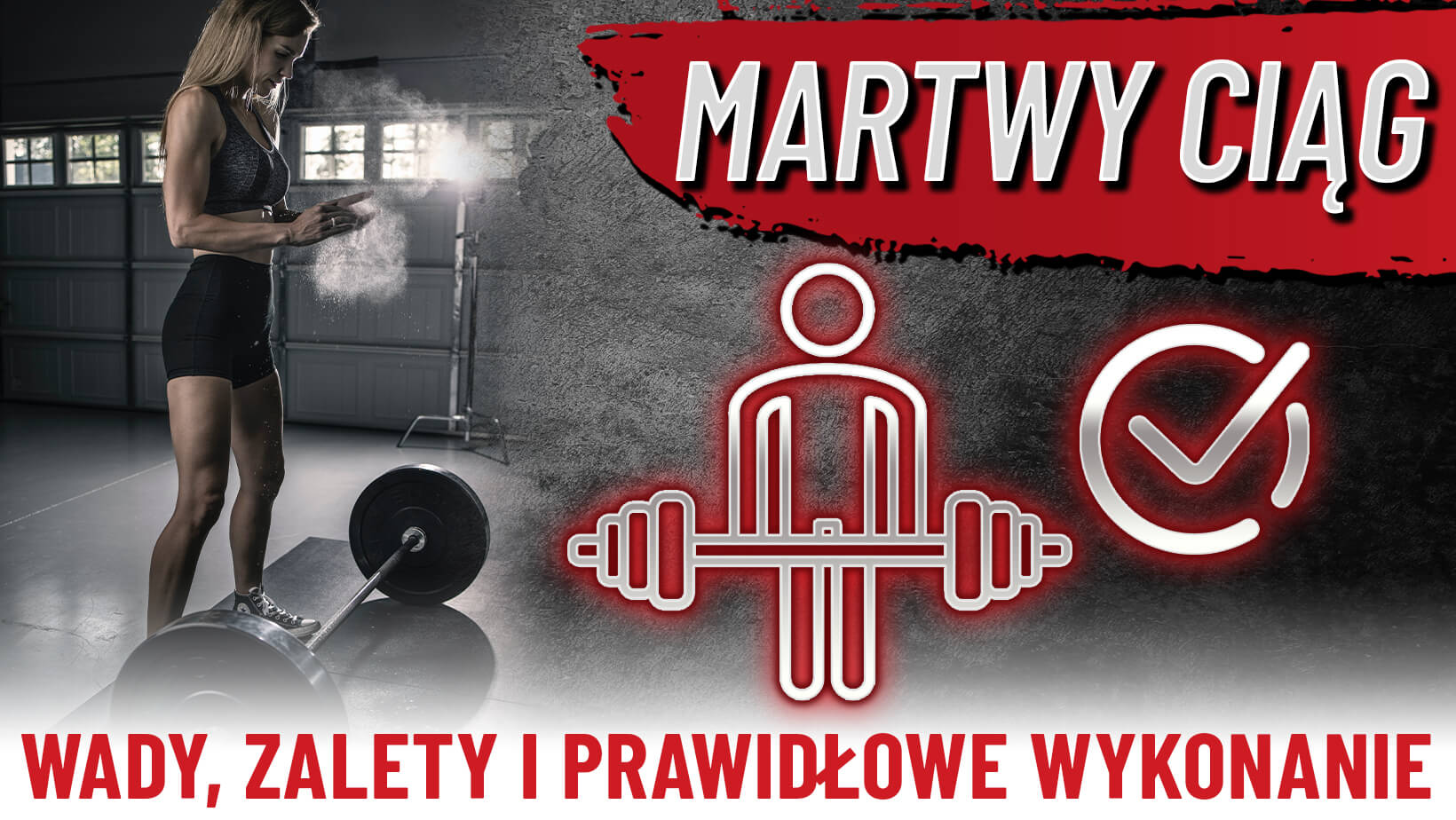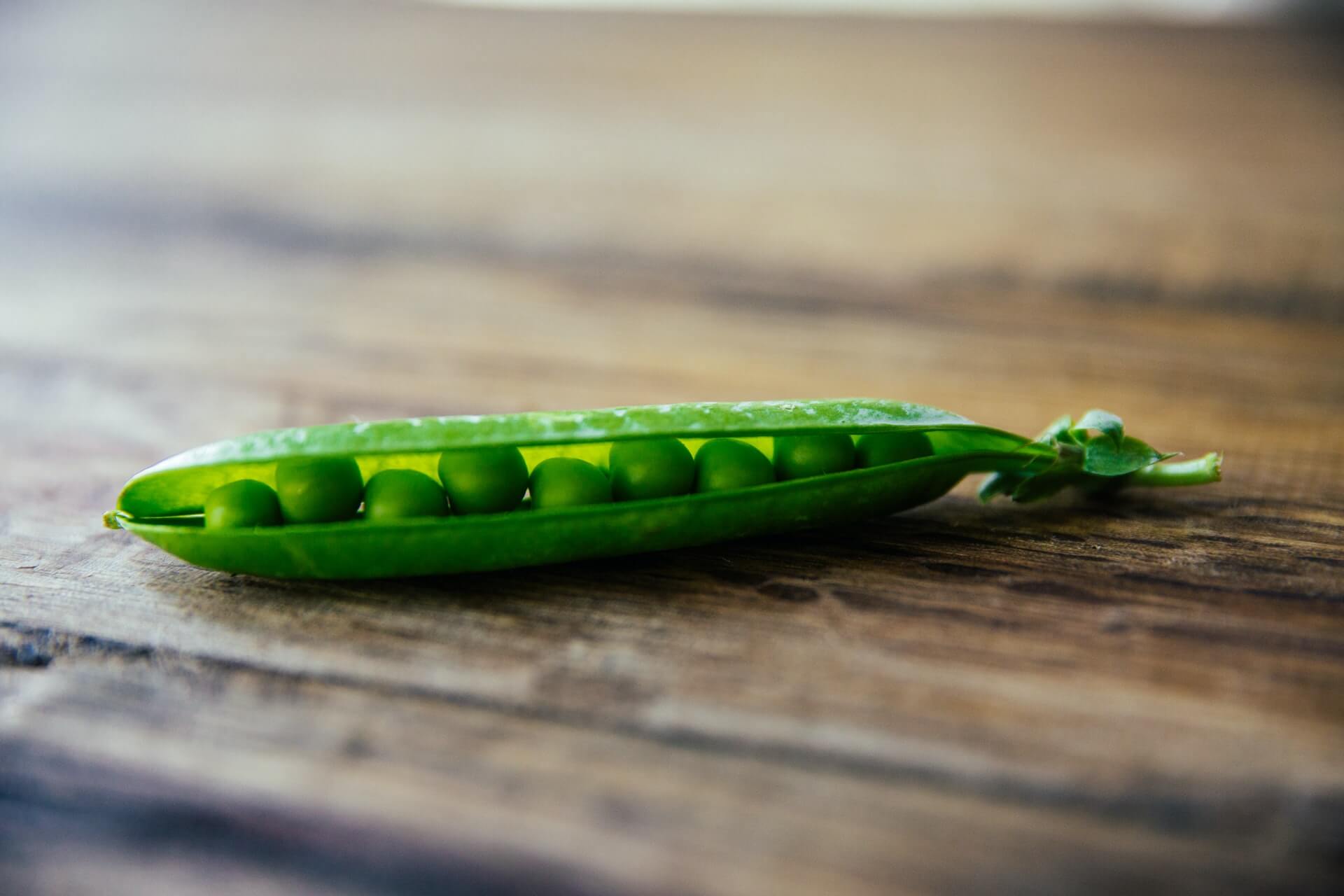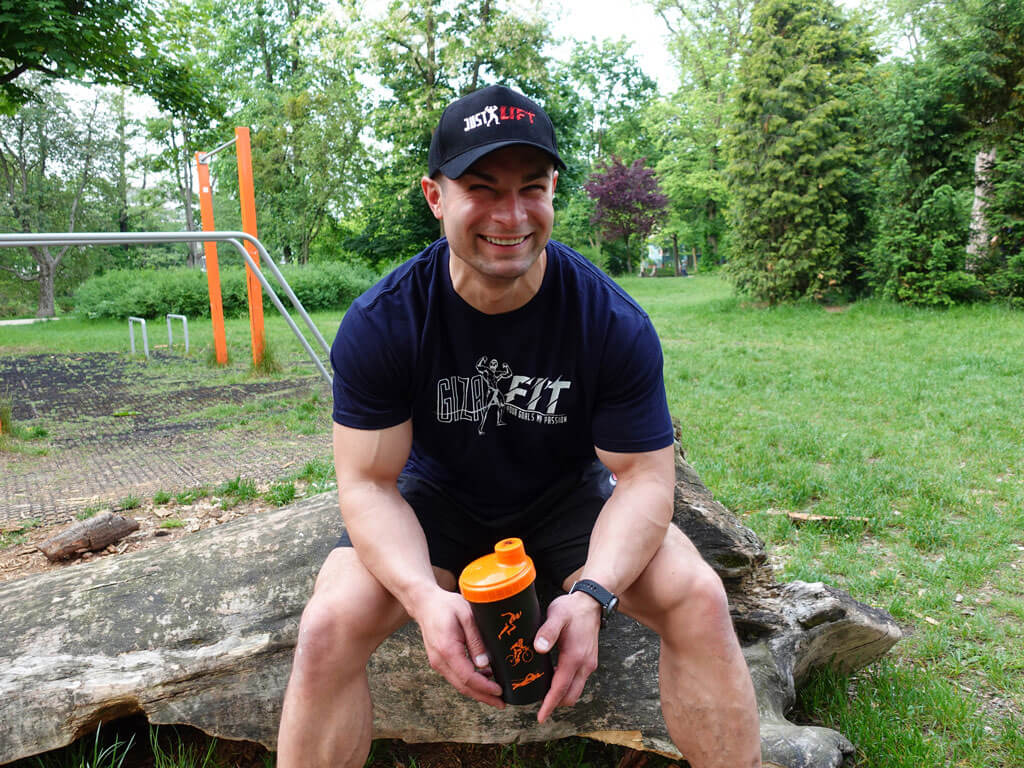

The deadlift is one of the most popular exercises performed at the gym. It is also a part of the strength triathlon. Seemingly the exercise consists only of lifting a weight from the ground and then performing a straight-up action with it. However, doing a deadlift the right way motivates the whole body to effort. Just as the name suggests: you pull the weight from the ground towards you, straightening your whole body. The exercise engages many muscles across the entire body. Doing that with heavy weight requires a lot of work from the musculoskeletal system. That initiates a systematic adaptation of the nervous system to the severe short-term effort. That, in turn, translates into great results.
The deadlift strengthens your hips, thighs, and back.
Anatomically, it begins with a concentric muscle contraction and ends with an eccentric one. Thus, the movement takes place without the occurrence of the muscle shortening-stretching cycle. As opposed to squats, for example. It's good to know that the exercise generates pressure and tension on many joints: the ankles, knees, and hips. Learning how to perform it requires taking into account the mobility of each joint. It's necessary to focus on the proper tension of surrounding muscle parts. Muscle contractures cause limited joint mobility, which affects the safe range of motion. Increased flexibility will help you perform the exercise correctly. In addition, poorly stretched muscles disrupt your posture. Sooner or later, that might contribute to injury. This exercise requires a heavy load. A rounded back can cause damage to the lumbar spine after the first repetition.

The technique of performing a deadlift consists of many elements. But it's really worth the effort. Taking care of the m improves strength and overall mobility. Proper execution of the deadlift contributes to faster progress in other exercises. Why is that? This exercise engages many muscles, including deep postural ones. The so-called core has to be tight the whole time during the deadlift. That translates into its significant strengthening and ensures the safer performance of other exercises. In addition, the deadlift has a favorable kinetic profile. It allows you to accelerate continuously for a significant part of the lift. That's crucial for developing muscular strength, otherwise known as power.

There are two popular variations of the deadlift. One is known as the deadlift from the legs (leg-lift). That's the most popular way, so it's called the classic deadlift or simply the deadlift. Performing a deadlift this way, you bend your knees and keep your torso in a vertical position. This technique uses a similar motion pattern in leg joint angles as the weighted squat. The second popular technique is the deadlift from the back (back-lift). Mostly referred to as the straight-legged deadlift. It involves a straight knee position and a bent torso during the initial phase of the movement. In this case, hips are higher than with the previous technique. That translates into a more inclined torso position during the final motion phase.
It is worth noting that the classic deadlift puts less strain on the lumbar spine. That seems to be more beneficial for reducing the risk of back injury. On the other hand, it puts more load on the knees. As opposed to that, the straight-legged deadlift exposes the lumbar region but puts less stress on the knees. Trained athletes can transition from one technique to another smoothly. Too much load with straight legs makes the m unable to maintain the correct posture of the spine. In the middle of the exercise, the y the n switch to the classic technique, relieving the back and shifting the weight to the legs.
During the classic deadlift, the recruitment of leg muscles occurs synergistically. That means many muscles work at the same time. In the case of the straight-legged lift, on the other hand, the y are engaged sequentially - one by one. Straight legs result in different muscles taking over the job. Namely: biceps femoris, semitendinosus, and semimembranosus. On the other hand, quadriceps works at a much shorter range. It's engaged only during the final phase of the movement (trunk straightening).
I just told you about the two basic deadlift techniques. Another popular variant of this exercise is the sumo deadlift. In this case, you should spread your legs wide. Grab a kettlebell and keep your hands between your knees. The torso remains almost vertical, as in the standard way. However, thanks to the wide spacing of the legs, in this case, its verticalization is even greater. That also shortens the motion and translates into less time spent performing the exercise. The refore, the sumo deadlift involves mainly leg muscles. However, the y work in a slightly different way than during classic deadlift. In this case, lateral and medial heads of the quads and the anterior tibialis muscle are mainly engaged. The traditional way engages the gastrocnemius muscle, which is on the opposite side of the shin. As for the back and quad recruitment, research suggests no significant differences. In addition, the sumo deadlift puts less strain on the back extensors.
The classic deadlift replicates more natural movement patterns. In everyday life, this is how we lift heavy objects. Or at least that's how you should do it! Training the classic deadlift strengthens the entire body. For less advanced, I strongly recommend choosing this technique. It translates into greater efficiency when doing housework. Trained muscles and controlled movement might help to prevent many injuries when carrying and lifting heavy objects. Sumo deadlift might as well be a good choice for beginners. It helps strengthen the legs without putting too much stress on the back. Starting your adventure with the deadlift from the straight-leg version can be dangerous. A sedentary lifestyle is often associated with a weak lumbar spine. Overloading it during training can easily lead to an injury.
Paying attention to the correct technique is crucial for your safety. Especially while working with a heavy load. And you should know that the current deadlift world record is 501 kg! I will now introduce you to the performance of the classic deadlift.
To make it easier for you to perform the deadlift correctly, you should know the order in which your muscles work. That enables you to determine if you are making a mistake somewhere. So let's get started! As you already know, the movement begins with the legs. At this point, the gastrocnemius and hamstring muscles contract concentrically. That causes the sole to flex. Next, the quadriceps is engaged. Its concentric contraction straightens the leg at the knee. The final phase of the movement requires straightening at the hips. That's the job of a gluteus maximus muscle. It begins to contract after straightening the knee. Throughout the exercise, the trunk muscles ensure the correct position of the back. The continuous contraction of the straight and oblique abdominal muscles provides stability to the spine. The back extensors support the m from the other side. The longissimus dorsi and iliofemoral muscles straighten the back. When you reach an upright position, pull your shoulder blades together. That prevents the upper spine from rounding. Scapula stabilizers are responsible for this, contracting isometrically. Simultaneously, the latissimus dorsi muscle plays a significant role in postural stabilization. It prevents the barbell from swinging and leaning forward. Arm muscles are also working the whole time. The isometric contractions of the forearm, shoulder, and biceps strengthen the grip. When returning to the starting position, the muscles responsible for the movement will naturally work in reverse order. The tension of the posture stabilizers, on the other hand, should remain constant.

Sometimes I hear that the grip strength is crucial in overall deadlift performance. However, the re's no scientific evidence for that. So, does grip strength affect your deadlift performance? in my opinion - both yes and no. The grip must be strong enough to hold the weight during the entire series of exercises. If it is not a problem for you, increasing the grip strength will not make you lift more weight. That is the responsibility of the muscle groups I mentioned above. But if the barbell falls out of your hands, it affects your performance in the deadlift. You won't be able to hold the weight for the whole series. The refore, you will not achieve the objectives of training. In this case, it is worth working on your grip strength. You might as well equip yourself with straps hanging on your wrists. The y relieve pressure from your fingers and enable you to hold the barbell longer.
Always remember that the most important thing is to perform the exercise correctly. Only the n you'd be able to benefit from it. Incorrect technique can easily lead to both minor and severe injuries. Below I present 10 benefits of performing the deadlift correctly.
First of all, don't do it alone at home. Training with heavy weights requires a proper preparation. I'd recommend starting by reading articles like this one and watching some instructional videos. That helps a lot with the the ory. However, remember that nothing can replace an experienced trainer. Keep in mind that not every exercise is for everyone. Such a person knows how to assess your current shape. On this basis, the y will decide whether you are ready for this type of exercise. A personal trainer will also help you develop correct movement patterns and avoid injuries. At the beginning of your adventure with the gym, it's worth working step by step. At first, focus on developing endurance, flexibility, and strength. Heavy loads come in time.
I'd recommend performing a deadlift at most twice a week. Depending on your goal, you should adjust the number of series. Building muscles requires only 4 series of 8-12 reps. If your goal is to improve dynamics or endurance, the number of series can increase up to 8. It's best to combine this exercise with leg training. Warmed up lower back after squats provides good muscle tension in the lumbar region. That minimizes the risk of injury. Properly warmed-up thighs and calves prevent muscle strains or other leg injuries. However, remember that injuries can still occur if you don't pay attention to the technique or apply too much load. If you do not want to combine the deadlift with leg training, make sure you warm up properly.
Beginning the adventure of deadlifting requires consultation with a trainer. Before such intensive training, you should take a look at postural defects. Significant muscle asymmetry and injuries to the spine, knees, or other joints may disqualify you at the start. In some cases, a coach might not be enough. Sometimes it requires consultation with a sports physiotherapist. I've already mentioned that deadlifts are helpful even for rehabilitation. However, only a good specialist can guide you through the recovery path. Adjusting the position, exercise intensity, and load is very important.